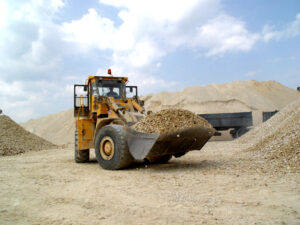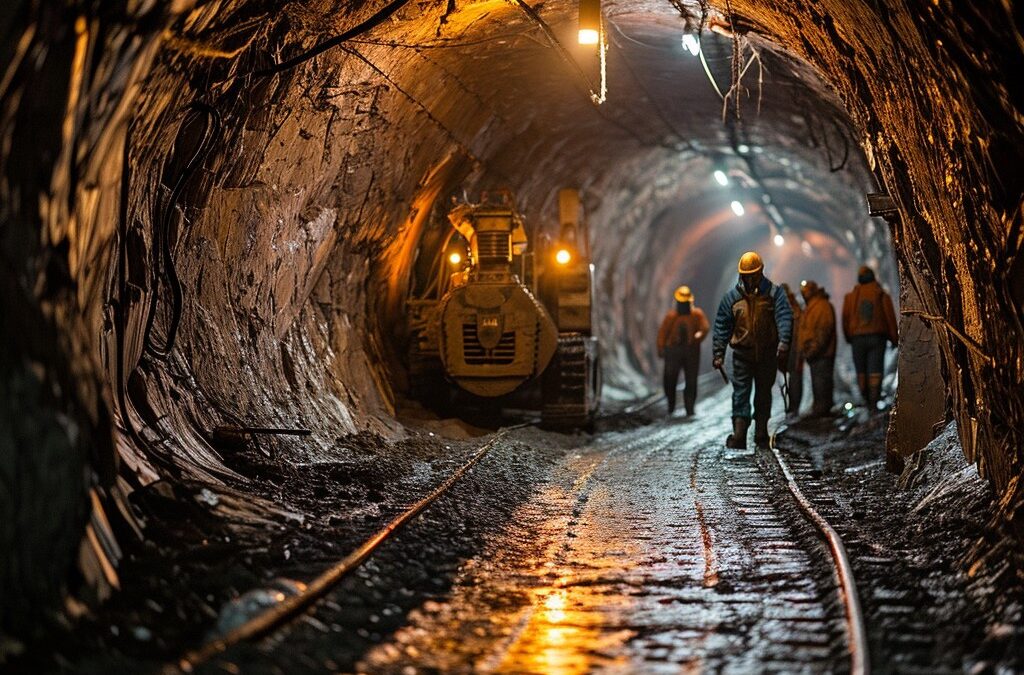In the inherently hazardous world of mining, where every day presents life-or-death challenges, MSHA training isn’t just a formality—it’s a lifeline. The difference between a tragic fatality and a near-miss can hinge on the quality of your safety training. Understanding the critical role of MSHA training in preventing fatalities and mine safety incidents is essential for maintaining a secure workplace and regulatory compliance. Let’s delve into the various aspects of MSHA training and how it can keep your team safe.
How MSHA Determines Fatalities and Near-Misses
MSHA goes beyond simply compiling incident reports. They use advanced analytical techniques to spot trends and patterns in mine safety incidents. Through careful examination of fatalities and near-miss incident reports, they uncover root causes and pinpoint areas of concern. This analysis helps them develop new safety protocols and promote a culture of continuous improvement and proactive hazard prevention.
What are the Most Common Causes of Mine Safety Incidents?
Understanding the primary causes of mining fatalities provides crucial insights into mitigating risks effectively. The most common causes include:
- Powered Haulage: Fatalities in this category involve incidents with vehicles used for transporting miners, materials, or equipment. This can include collisions, runovers, or mechanical failures.
- Machinery: Accidents involving mining machinery, such as crushers, conveyors, and drills, can lead to severe injuries or fatalities due to mechanical failures, entanglements, or improper use.
- Falling or Sliding Material: This refers to accidents where loose rock, soil, or other materials fall or slide unexpectedly, leading to fatalities.
- Fall of a Face, Rib, or Highwall: Fatalities can occur when there is a collapse or fall of a mine’s vertical or inclined surfaces, such as walls or ribs.
- Slip or Fall of a Person: This category includes fatalities resulting from slips, trips, or falls experienced by miners, often due to uneven surfaces, poor housekeeping, or inadequate fall protection.
Powered haulage incidents, involving trucks and other heavy machinery, are a leading cause of accidents in mines. Machinery accidents, such as incidents involving conveyor belts and drilling equipment, also pose significant risks. Falling materials from stockpiles or during blasting operations, collapses of mine roofs or walls, and slips or falls on slippery surfaces further contribute to safety incidents. Inadequate training often exacerbates these risks, which only highlights the necessity for comprehensive MSHA training programs to address these hazards effectively and proactively.
Understanding MSHA Training Programs
MSHA mandates specific training requirements under Part 46 for surface miners and Part 48 for underground miners. These programs encompass essential components such as annual refresher training, new miner training, and specialized courses for experienced miners. Differentiating between Part 46 and Part 48 training ensures that miners receive tailored instruction relevant to their work environment, enhancing safety and regulatory compliance. Beyond basic safety protocols, MSHA training equips miners with specific skills, such as emergency response procedures and hazard recognition. These are crucial for preventing accidents and ensuring swift, effective responses to potential threats.
The Role of MSHA Training in Preventing Incidents
Comprehensive MSHA training programs equip miners with the knowledge and skills necessary to navigate potential hazards confidently. Scenario-based training exercises simulate real-world situations to prepare miners for emergencies they may encounter in the field. Regular refresher courses ensure that safety practices remain current and relevant. This reduces the likelihood of accidents and promotes a safer working environment overall. By empowering miners with the tools and knowledge to identify and mitigate risks effectively, MSHA training plays a pivotal role in preventing incidents and safeguarding the well-being of all personnel on site.
Preventing Fatalities: Rules to Live By Initiative
MSHA’s “Rules to Live By” initiative targets nine critical accident categories, outlining specific safety measures to prevent fatalities and serious accidents in mining operations, such as falls, equipment-related incidents, and maintenance issues. By integrating these guidelines into daily practices, mining operations can mitigate risks and maintain high safety standards, ensuring compliance with MSHA regulations and fostering a culture of safety excellence.
MSHA Regulations and Compliance
MSHA regulations are the backbone of safety in the mining industry, meticulously designed to prevent accidents and fatalities. These regulations cover every aspect of mining operations, from the structural integrity of mining sites to the health and safety protocols for miners. When your mining operation adheres to these standards and regulations, it is considered compliant.
What does this look like?
- Comprehensive Safety Standards: MSHA enforces a rigorous set of safety standards that apply to both surface and underground mining operations. These standards address critical areas such as equipment maintenance, hazard communication, ventilation, and emergency preparedness. By setting clear and enforceable guidelines, MSHA ensures that mining companies adhere to best practices and maintain high safety standards, reducing the likelihood of both fatalities and near-misses.
- Regular Inspections: MSHA conducts routine and unannounced inspections of mining operations to ensure compliance with safety regulations. These inspections are crucial for identifying potential hazards, verifying adherence to safety protocols, and uncovering any deficiencies that could lead to accidents or near-misses. The commitment to regular inspections helps maintain a constant focus on safety and compliance.
- Training and Certification: Compliance with MSHA regulations also involves rigorous training and certification requirements on your part. MSHA mandates specific training programs for miners, which cover everything from basic safety procedures to advanced hazard recognition. This training ensures that miners are well-prepared to handle the risks associated with mining and to respond effectively in emergency situations, thereby minimizing the risk of fatalities and near-misses.
- Enforcement and Penalties: To ensure that mining companies comply with safety regulations, MSHA has the authority to enforce penalties and fines for violations. These enforcement actions serve as a deterrent against neglecting safety practices and underscore the importance of adhering to established regulations. By holding companies accountable, MSHA reinforces its commitment to preventing mining fatalities and reducing near-misses.
- Continuous Improvement: MSHA’s regulations are continuously updated based on industry trends, emerging hazards, and technological advancements. This proactive approach ensures that safety standards evolve to address new challenges and incorporate the latest safety practices. By staying ahead of potential risks, MSHA helps mitigate the factors that could lead to fatalities and near-misses.

Finding the Right MSHA Training for Your Team
Selecting the right MSHA training program is critical for enhancing safety and regulatory compliance within mining operations. Effective training sessions should be engaging, interactive, and tailored to specific job roles and hazards encountered in the mining environment, such as the ones provided by MSHA Safety Services. Consulting experts can streamline training efforts and ensure comprehensive coverage of essential safety protocols.
By investing in quality training programs, mining companies equip their teams with the skills and knowledge needed to uphold safety standards, mitigate risks, and respond effectively to potential emergencies.
The Impact of MSHA Training on Mine Safety
Effective MSHA training programs are integral to mitigating risks, and preventing accidents. MSHA training fosters a culture of safety in mining operations. When you and your team understand—and implement—high training standards, mines can uphold regulatory compliance, enhance workplace safety, and protect their most valuable asset—their workforce. Ongoing improvements in training methods and strict adherence to safety protocols will help ensure that mining operations remain well-protected against potential hazards.

